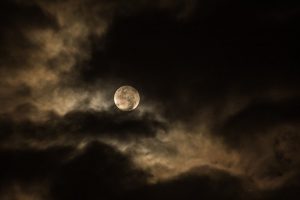
Supermoons are caused by the shape of the Moon’s orbit, which is not a perfect circle, but an ellipse, or oval, shape. The Moon orbits the Earth once each month, and each month, it reaches a point farthest from the Earth, called apogee, and a point closest to the Earth, called perigee. According to how a Supermoon is defined, it occurs when the Moon is at least 90% of the way to its perigee position at the same time it is in its “full” or “new” phase.
According to the Farmers’ Almanac, the term Supermoon became popular in March 2011 when the Moon’s perigee brought it to 221,565 miles of Earth; within 127 miles of the absolute closest that it can come (the absolute closest the Moon can come is 221,438 miles from Earth; an exceedingly rare occurrence).
And though the May full moon generally marks the end of hard frosts, this full moon brings with it at least one more frost possibility as the overnight low Friday night is 29.



